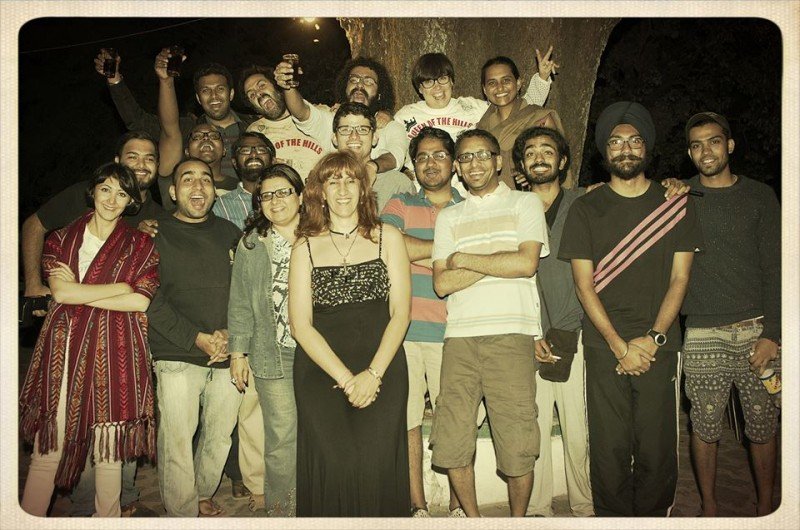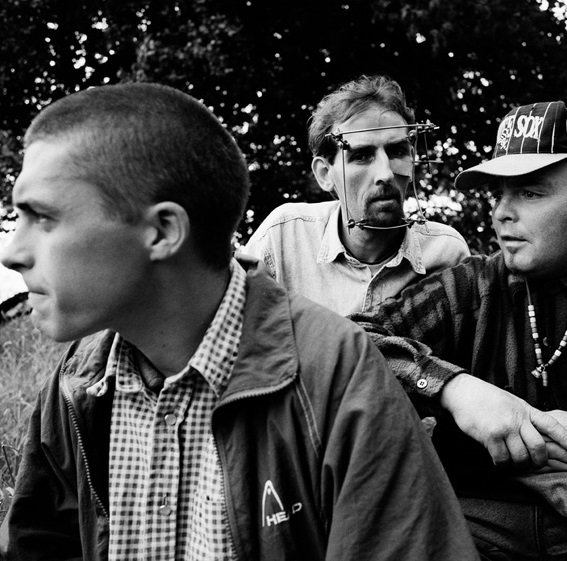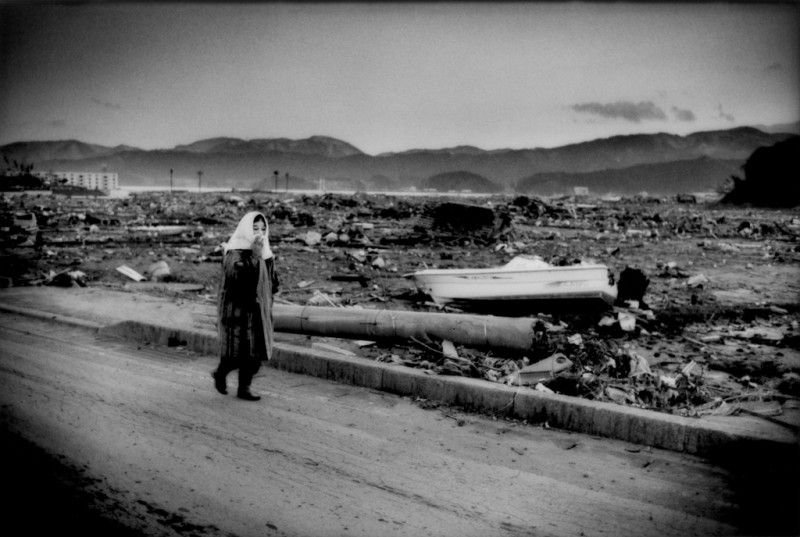India –
Documentary filmmaker, media trainer and human rights activist, Stalin K co-founded the international community media organisation, Video Volunteers. The organisation provides people in the underdeveloped areas of India with the means to develop video journalism skills and enables them to uncover underreported stories from their own communities. In a recent venture with Magnum Foundation, the organisation delved into photography for the very first time and has found a new medium of expression for its style of journalism.
In his interview with Emaho, Stalin gives an introduction into the empowerment, advocacy and community ownership involved in the upkeep of the diverse company that is Video Volunteers.
First off, could you tell us about how you created ‘Video Volunteers’ and how a team was formed?
Video Volunteers was an idea that my partner Jessica Mayberry and I had about 10 years back in 2003. Prior to meeting each other, I was engaged in human rights work and documentary filmmaking, a community based radio and some bits of participatory media since around 1991. When we met, we thought about doing something dedicated to community voices and we figured that the gap that existed could be used as a platform to allow the underrepresented communities to have an unmediated space to share their opinions and reports, so that was the genesis of Video Volunteers.
 ©Amit Topno
©Amit Topno
Could you tell us some more about the collaborative process?
We focus on reporting violations of the peoples’ entitlements and rights and therefor ask for action to be taken. It’s sort of an action-oriented media, which means that our intervention with them is specifically after the two week long residential training workshop that everybody goes through to be inducted into the program. You see we are not an anthropological organisation, so we are quite political in our work. We work within a human rights framework so everything is rights based and all the issues we cover are from a human rights perspective.
For every video they make, they are assigned mentors. The first level of mentorship is on the field. Typically these mentors are Community Correspondents who have been with us for a long time. For every 10 Community Correspondents or CCs as we like to call them, we have a mentor and these mentors then report to another layer of mentors, and if they have any issues they will report back to us. Typically mentors are not authorised to approve or disapprove a video, they are only authorised to assist the community person to find focus and find the connection between the micro and the macro issue and to get their community voice sharply in place.
There are also editors who are involved, who sit and edit the work as the CC wants it, which is then to be given to a co-ordinator who can use the video as a piece of evidence asking the CC how they intend to use it to get the government officials to bring a world change – it’s a very hands-on work.
In 2013, VV partnered with Magnum Foundation where Olivia Arthur and Sohrab Hura delivered workshops for your community photographers. Could you tell us a bit about this? Why did you decide to organise this?
Well, we had been in discussion with the Magnum Foundation for a couple of years or more now and they have showed an interest in supporting the kind of work we do. The reason we agreed to do this was because we thought that it would be fantastic for the people we work with to be trained by photographers who are very well recognized and well placed within theMagnum Foundation.
If we believe that photographers like Olivia and Sohrab can teach our people a different way of looking at things and to learn from each other’s work then it will definitely add to the stability that our CCs gain from making videos. We are very often working just with video, where they can sort of use the camera as a paintbrush, they can pan it from left to right, top to bottom, trying to capture a naïve event and very often they tend to forget that one image is perhaps all that you need to tell a powerful story.
Photography teaches you how to squeeze down big narrative pieces into one or a few still images, so that was a big learning experience and the main message of what we were intending to show them.
Keeping the spirit of activism intact, do you see photography as a new medium for expression for the Community Correspondents? How well do you think will photography serve the mission of Video Volunteers?
In the initial stage we saw the photography project as a means for the individuals to enhance their video making skills by understanding more about composition and light. As the project evolved, however, it became clear that they possessed a huge amount of talent in what they were doing.
As things currently stand, we are applying for further funding to continue the project in partnership with the Magnum Foundation. This is likely to see a smaller number of photographers working with Olivia and Sohrab to review and edit their work over the next year. In this sense the switch has been to supporting the progression of these individuals as photographers. We’ve seen their potential and we now want to maximise it.
Community Correspondents have the ability to reach places that may be difficult for others to get to. From the photo essays produced during the workshop, we know that the stories they tell have a different intimacy to them. So in terms of serving Video Volunteers’ mission, photography adds a new dimension to visual story-telling from grassroots India. Subjects and perspectives which are previously often unseen.
 ©Nirmala Ekka
©Nirmala Ekka
So unlike video shooting, which has a prerequisite in the form of a script, photography is pretty instantaneous and requires thinking on one’s feet. How was the experience for the Community Correspondents to fit into this profile, especially when most of them have been trained in shooting videos?
We have a network of over 200 salaried community correspondents at Video Volunteers, working in 23 states across India. When a CC decides to make a video on a topic, a mentor is usually the first point of contact before shooting. We have 15 mentors who support CCs with the planning and storyboarding of videos. In our experience, this contact ensures that the videos follow a structure that makes them accessible to our target audience.
For the photography workshops, we were working with a smaller number of CCs, but there were some similarities in terms of the scripting and shaping of the story that took place before CCs entered the field.
At our second workshop in Goa, Olivia and Sohrab took the group through an exercise at Calangute beach, where the task was to photograph the different ways of making money in Goa.
Back at the workshop we reviewed the work and were able to pick-up on some key themes about using the camera to the best effect and working with available light. Olivia and Sohrab then worked closely with the CCs to scope their stories during the workshops.
In the case of someone like Ajeet, a CC, who wanted to photograph the Kumbh Mela, but the emphasis of the exercise, was on exploring an original angle while approaching the festival.
He eventually chose to photograph the changing landscape of the Mela across the month long event, producing over 7,000 images in the process. His resultant work was one of the highlights in the group.
Have some CCs taken to photography as a medium for documentation of their stories, after the workshop?
All of our CCs have their own cameras, which they carry with them, out of choice, most of the time. It was amusing at the workshops to see the range of images they had on their memory cards. Many have clearly become unofficial photographers in their towns and villages, capturing weddings, celebrations, community meetings and assemblies across the year.
How has the response been like to the workshops? Were there any difficulties that had to be overcome?
The response was overwhelming, we had started off by seeing an inventory of about 10 women but we ended up training 15 women and 5 men. There was a strong demand not just from these 20 to have another round of training but also other people who were not part of the first round of workshops who told us they would like to be trained after seeing the projects and work. The responses as seen during the Delhi Photo Festival to the presentation that we did were also quite encouraging, most people including curators commented about how fresh the perspectives were of these men and women taking the photographs.
 ©Reena Ramteke
©Reena Ramteke
One of your community photographers Reena mentioned of her experience, “In video people can be made to speak, this is of course not an option with photography.” With this in mind do you think that Video Volunteers may wish to explore photography more as a challenging empowerment program for the community voices?
Absolutely, I think that one reason is to better their understanding of narratives, as Reena pointed out videos can talk so when you add audio to any medium the visual aspects get weaker. In photography because there are no words you are solely relying on the visual aspects and they become much stronger. The other reason being that we are also open to doing the same sort of work, like making photographers out of our video activists, they could start tomorrow by photographing their places, meaning we could also possibly explore what it would look like if all these people took photographs of their surroundings and issues.
And perhaps photography could facilitate a much deeper bond between the volunteers and their subjects, as one of your CCs Amit mentioned on the blog that it can be a challenge to get close to the people he films?
True, because with photos, especially when you are working in the communities, people are instantly going to see what you have recorded. Photographs, especially taken on the digital cameras can be shown back to the people who will then have a sense of relating to the still images. Video cameras also have the ability to be played back instantaneously, so the people who are seeing their own interviews played back like to strain their ears to listen to what has been said and they concentrate more on listening than seeing. In photographs, it is all seeing so the playback is much more effective and helps to create that bond that Amit was talking about.
Merging the spirit of activism and journalism with the art of photography, please share some insights, ones which you probably did not see before, come out in the work of the CCs during photography workshop.
Reena Ramteke initially wanted to photograph the neglect of the local Anganwari centre near her home, specifically the corruption that negatively affected the running of the place.
As the project evolved, Reena’s focus moved more towards documenting the everyday life of an Anganwari worker. In this sense the story really took shape during the editing phase at the second Magnum workshop. The resultant work leaned more towards social documentation than the activist stance that it came from.
She has since continued to photograph women’s issues in her photography, more recently focusing on pregnancy in rural India. What we learned from this was the way in which a story can change during the editing process.
Amit Topno began his project wanting to photograph the effects of alcoholism on his community. As he explored the topic, his focus became more personal, and he was soon photographing his father’s battles with drinking. In a similar sense, the story began as an activist’s account of alcohol use, before venturing into the realms of what we would consider journalism.
That said, in Reena and Amit’s case, without the activism component there would have been no journalism, and no photo series.
 ©Saroj Paraste
©Saroj Paraste
Are you satisfied with the outcome of the partnership with Magnum Foundation and would you consider doing something similar in the near future?
Yes, absolutely! We will definitely consider doing something similar. We are currently in the process of writing out for a fund that will enable us to collaborate and do more such work with the Magnum Foundation.
Photography, Interviewed by Lauren Schofield









